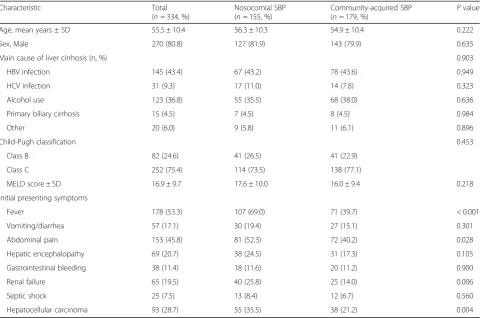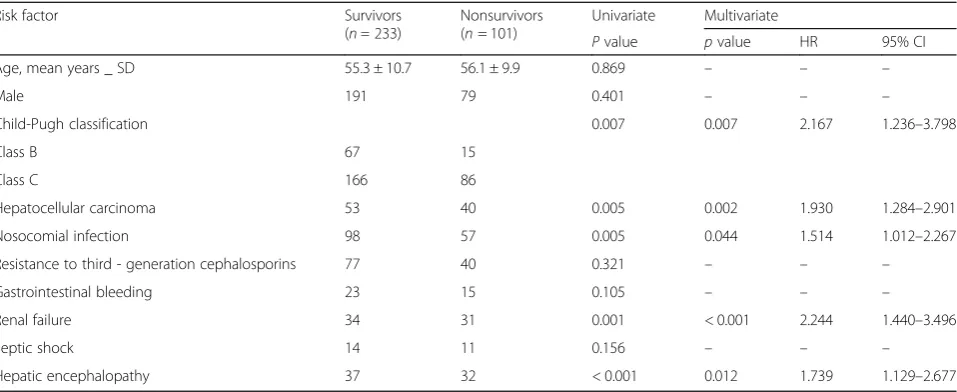Causative agents and outcome of spontaneous bacterial peritonitis in cirrhotic patients: community acquired versus nosocomial infections
Full text
Figure




Related documents
(5), the power flow from WFs must be reduced or dissipated by DC resistor, so that the dc voltage will not increase. Based on the power flow from WFs and the DC-link voltage
Traditionally, once clinicians identify families as being food insecure, essential referrals are placed to in-clinic (eg, social work) and community resources (eg, the
For this reason we would like to suggest the placement of an emergency percutaneous decompression needle into the abdomen if tension pneumoperitoneum is clinically manifest in order
We also checked the EL levels in the urine samples of other cancer types (lung, colon and rectum cancers) and benign lesions (gastritis and gastric leiomyoma) to check if EL
By 1743, Johann Heinrich Silvius was married to Anna Margretha Petty and had a son, named Nicholas Silvius. He was born on January 25, 1743 and baptized at the Jordan Lutheran
The objective of this study is also to elucidate the distribution of heavy metals (such as Zn, Cd, Ni and Pb) and their levels on roadside dust, and to assess the roadside
▪ This study is the first to focus on patients ’ experiences of conventional care pathways for frozen shoulder (FS) and their priorities for treatment.. ▪ Patients were recruited